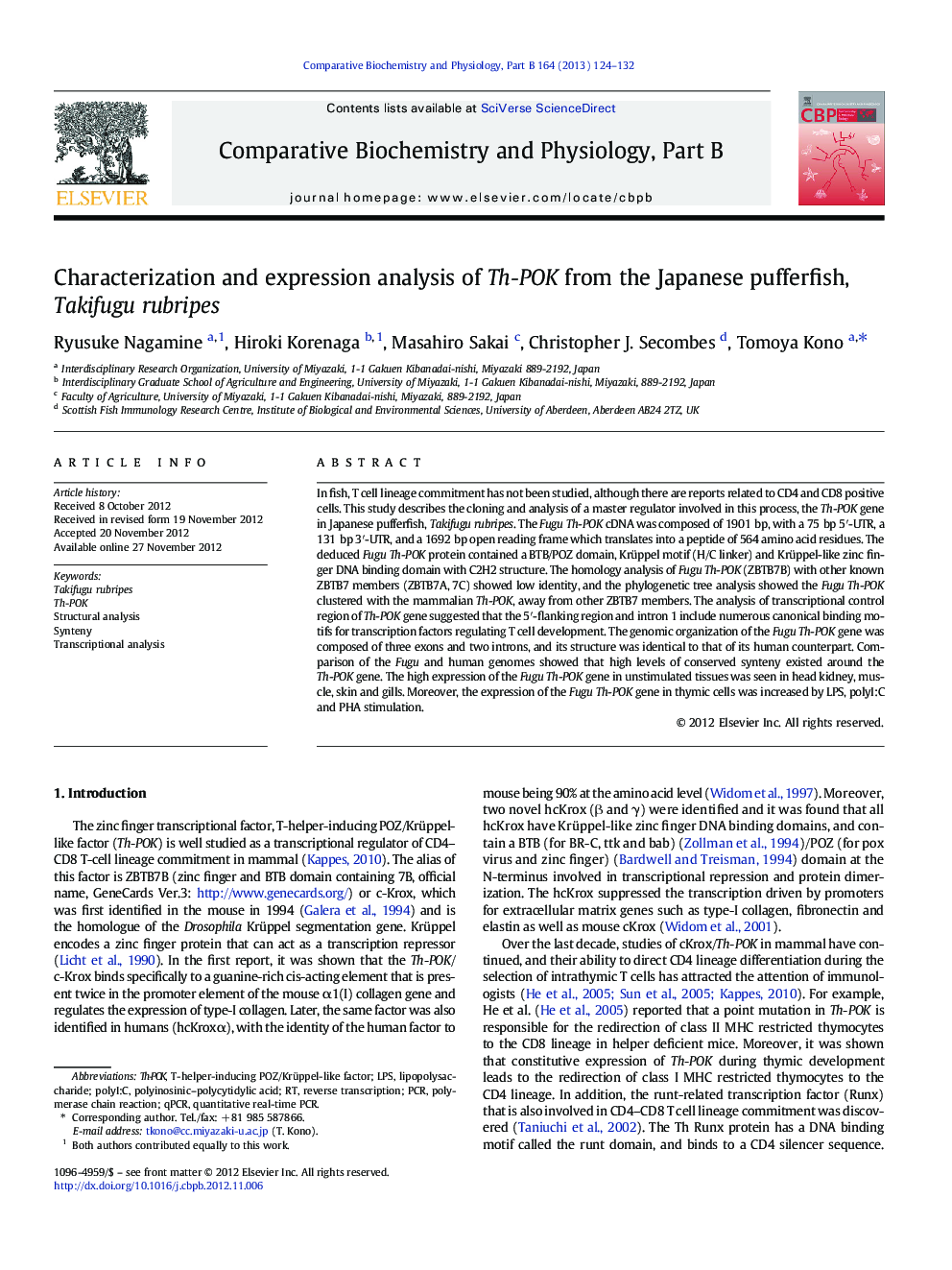| Article ID | Journal | Published Year | Pages | File Type |
|---|---|---|---|---|
| 1975409 | Comparative Biochemistry and Physiology Part B: Biochemistry and Molecular Biology | 2013 | 9 Pages |
Abstract
In fish, T cell lineage commitment has not been studied, although there are reports related to CD4 and CD8 positive cells. This study describes the cloning and analysis of a master regulator involved in this process, the Th-POK gene in Japanese pufferfish, Takifugu rubripes. The Fugu Th-POK cDNA was composed of 1901Â bp, with a 75Â bp 5â²-UTR, a 131Â bp 3â²-UTR, and a 1692Â bp open reading frame which translates into a peptide of 564 amino acid residues. The deduced Fugu Th-POK protein contained a BTB/POZ domain, Krüppel motif (H/C linker) and Krüppel-like zinc finger DNA binding domain with C2H2 structure. The homology analysis of Fugu Th-POK (ZBTB7B) with other known ZBTB7 members (ZBTB7A, 7C) showed low identity, and the phylogenetic tree analysis showed the Fugu Th-POK clustered with the mammalian Th-POK, away from other ZBTB7 members. The analysis of transcriptional control region of Th-POK gene suggested that the 5â²-flanking region and intron 1 include numerous canonical binding motifs for transcription factors regulating T cell development. The genomic organization of the Fugu Th-POK gene was composed of three exons and two introns, and its structure was identical to that of its human counterpart. Comparison of the Fugu and human genomes showed that high levels of conserved synteny existed around the Th-POK gene. The high expression of the Fugu Th-POK gene in unstimulated tissues was seen in head kidney, muscle, skin and gills. Moreover, the expression of the Fugu Th-POK gene in thymic cells was increased by LPS, polyI:C and PHA stimulation.
Keywords
Related Topics
Life Sciences
Biochemistry, Genetics and Molecular Biology
Biochemistry
Authors
Ryusuke Nagamine, Hiroki Korenaga, Masahiro Sakai, Christopher J. Secombes, Tomoya Kono,
